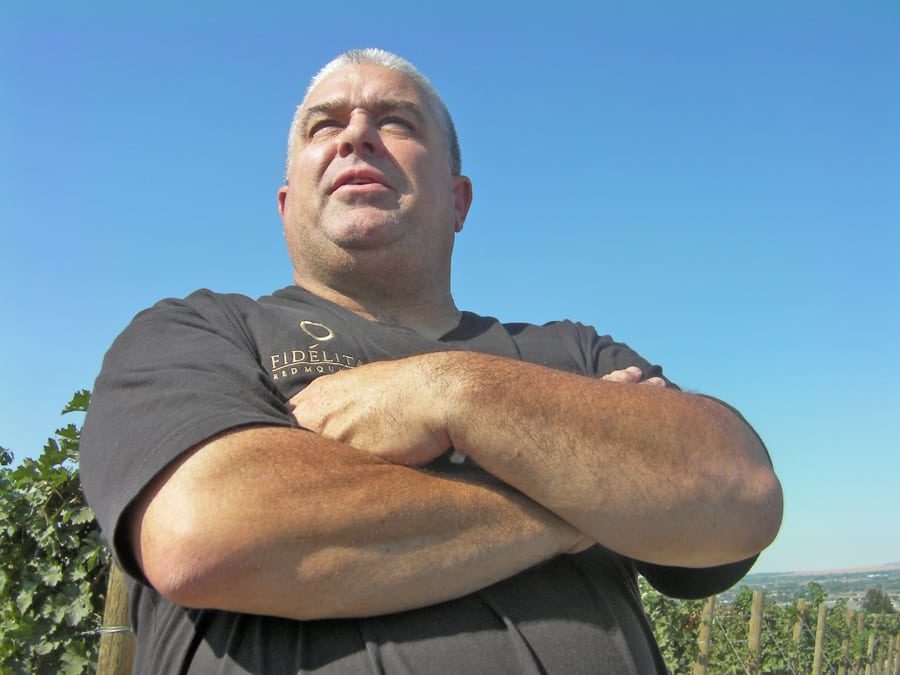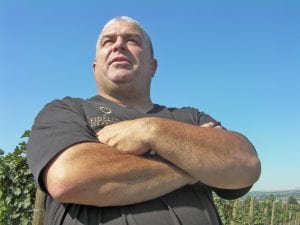
Home » Washington’s wine production shifts firmly into reds
Washington’s wine production shifts firmly into reds

February 14, 2017
By Wine News Service
Politically, Washington’s Columbia Valley has been the red part of a blue state for decades. And when it comes to wine, Washington has shifted firmly to being a red wine-producing state.
The last year Washington produced more white wine than red was in 2012, and it’s likely to be the last for the foreseeable future.

When Charlie Hoppes of Fidelitas Wines in Richland started making wine in Washington 28 years ago, white wines – Riesling, Chenin Blanc, Sauvignon Blanc and Chardonnay – made up about 90 percent of the production.
“Reds were sort of a novelty thing I did,” he said. “People liked them, but they were so focused on whites, it was sort of an afterthought.”
Hoppes noticed a shift toward reds in the early ‘90s, after he arrived as the red winemaker for Château Ste. Michelle. The company recognized the trend, too, and built a red-wine making facility in 1994 in the Horse Heaven Hills south of Prosser
“We knew we needed to get on board and start making some red wine,” Hoppes said.
It started with Merlot, one of the primary grapes of France’s Bordeaux region. By 1995, Washington was crushing 10,000 tons of Merlot each fall. Nationally, Washington was gaining a reputation for Merlot, a grape that did not grow so well in California. For the past four years, Washington winemakers have crushed in excess of 36,000 tons of Merlot each harvest, even as interest in the wine has started to wane a bit.
In 1985, the first Syrah was planted in Washington in the Yakima Valley. It was virtually unknown before that because no one is quite sure how the tender Mediterranean variety would handle Washington’s occasionally harsh winters. But interest grew each year and, by 2008, more than 10,000 tons were crushed each harvest.
Since 2013, Syrah production has hit 15,000 tons each harvest. While interest is slowing in Syrah, it is still being planted and turned into high-end wines. Global interest in Syrah has slowed in recent years, primarily from a glut of underpriced Australian Shiraz (the same grape as Syrah) that flooded the market. Fortunately, high-end Syrah remains a viable market for top Washington producers.
Perhaps surprisingly, the top wine grape in Washington is Cabernet Sauvignon – known among winemakers as King Cab because of its higher prices, quality of the wine and dominance in Bordeaux and Napa Valley. In 2000, Cabernet Sauvignon hit 13,000 tons harvested in Washington — passing the 10,000-ton mark for the first time. It increased in 2015 to 47,000 tons of Cabernet in Washington. The sweet spot for growing Cabernet appears to be the Horse Heaven Hills, primarily around the town of Alderdale.
Of the nearly 11,000 acres of red wine grapes being grown in the Horse Heaven Hills, nearly 7,000 of them are Cabernet Sauvignon being grown primarily for Ste. Michelle Wine Estates which use the grapes for such brands as Château Ste. Michelle, Columbia Crest and 14 Hands.
Hoppes now focuses the majority of his production on red wines, making up to six different bottlings of Cabernet Sauvignon annually. Nearly all of his grapes come from Red Mountain, the smallest American Viticultural Area in the state. Near West Richland, it is considered by many to be the top area in the state for wine grapes, particularly Cabernet Sauvignon. Of the 2,000 acres of grapes planted on Red Mountain, more than 90 percent are red wine varieties.
This trend toward red is mirrored in the Walla Walla Valley, where few white varieties are grown. Interestingly, this has occurred for very different reasons than Red Mountain. While Red Mountain is warm and conducive to red varieties, the Walla Walla Valley is a relatively cool area, more similar to the Yakima Valley, which is home to more white varieties. Walla Walla, however, developed into a red wine area primarily on the reputation of its early producers. Wineries such as Leonetti Cellar, Woodward Canyon and L’Ecole No. 41 gained fame in the early 1980s for red wines. As that fame grew, more red grapes were planted. Today, Cabernet Sauvignon is the top grape. Of the 2,700 acres of wine grapes grown there, the top seven are red varieties.
Despite all this, plenty of white wine still is produced in Washington. This is driven by Château Ste. Michelle, the state’s oldest and largest producer. It makes more than 1 million cases of Riesling each year, earning the title of the world’s largest producer of the wine, even in Germany. Ste. Michelle also makes more than 1 million cases of Chardonnay. Without these, Washington’s divide between reds and whites would be even greater.
Hoppes, who makes red wine his business, sees an important continuing role for white wines.
“What are you going to serve with scallops?” he said. “Don’t tell me Merlot.”
Seattle, he points out, is still a seafood restaurant town, so there’s still lots of room for white wine in Washington.
Local News Viticulture
KEYWORDS february 2017





